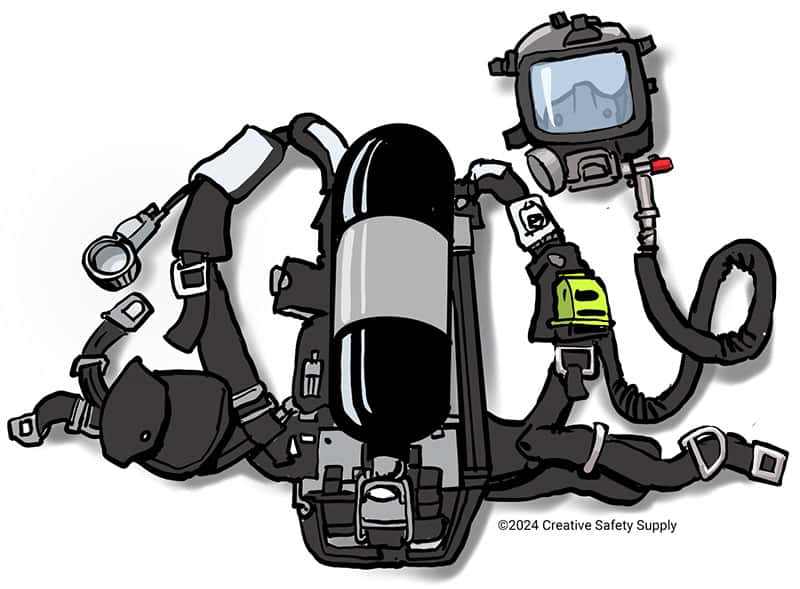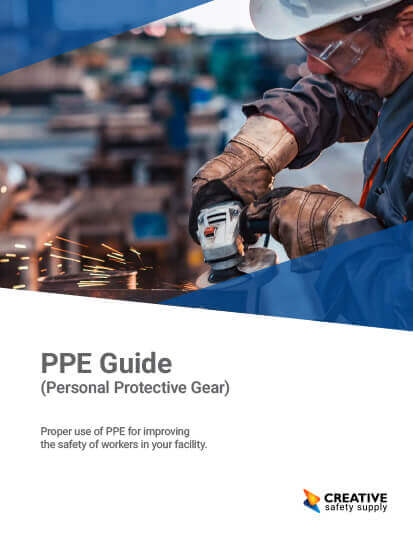
SCBA stands for self-contained breathing apparatus, sometimes called industrial breathing sets. Typically used by firefighters and in industrial workplaces, SBCAs are a type of respirator used when the atmosphere is immediately dangerous to life or health. An SCBA provides breathable air where oxygen deficiency, smoke, dangerous gases, or other airborne contaminants present. SCBAs were also prescribed to medical staff during the treatment of Ebola.

A self-contained breathing apparatus is usually comprised of three parts: a high-pressure tank, a pressure regulator, and an inhalation connection such as a mouthpiece, a mouth mask, or a face mask. When all three parts are put together, they are mounted to a carrying frame for the worker to put on. The two major types of SCBA are:
- Closed Circuit: Also known as a rebreather, these SCBAs filter, supplement, and recirculate exhaled gas. Closed-circuit SCBAs are typically used in longer rescue missions, like in mining environments.
- Open Circuit: Filled with filtered, compressed air rather than pure oxygen, these tanks can run out quicker, making them ideal for shorter rescue operations.
SCBA Regulations
Two organizations in the United States are responsible for SCBA regulations, the National Fire Protection Association (NFPA) and the National Institute for Occupational Safety (NIOSH). For SCBAs used in firefighting, the equipment must meet the NFPA Standard 1981. This NFPA standard establishes requirements for selecting, care for, and maintaining SCBAs. NIOSH on the other hand, has instituted a certification program for SCBAs used in chemical, biological, radiological, and nuclear environments.
Because SCBAs are used in environments immediately dangerous to life and health, it is absolutely critical employees are properly trained. Workers should know how to properly put on all components of the SCBA, complete a number of checks before use, how to safely doff the equipment, and how to maintain it.
Similar Questions
- What does APR stand for?
- What does PPE stand for?
- Who regulates PPE?
- What are different types of PPE?
- What is the proper way to dispose of PPE?
- What PPE is recommended for chemical hazards?
- What are the “Dos” and “Don’ts” of PPE?
- What does the Z87 on safety glasses mean?
- What are PPE requirements?
